康复作业治疗专业
Occupational Therapy
一、专业简介
广州医科大学于2005年开办康复治疗学专业,2016年将康复治疗学专业分作业治疗方向(Occupational Therapy, OT)和物理治疗方向培养,2020年获国家教育部审批设置作业治疗专业,2021年正式获得世界作业治疗师联盟(World Federation of Occupational Therapists,WFOT)专业认证最高认证等级。
康复作业治疗(Occupational Therapy,OT)是康复医学的一个重要组成部分,是以康复对象为中心,通过有选择的作业活动或/和适当的环境干预来改善康复对象躯体、心理和社会功能,促进健康与幸福的一门医疗卫生专业,主要包括上肢手功能训练、认知治疗、小组治疗、日常生活活动能力治疗、文娱治疗、职业治疗、精神心理作业治疗、感觉统合治疗、矫形器压力衣治疗、辅助器具选择与使用、环境改造等,还包括新技术如虚拟现实技术、智能家居、神经导航下精准 rTMS 刺激技术、电脑辅助认知康复评估与治疗系统、镜像神经元治疗等。治疗的病种包括:神经系统及老年疾病、肌肉骨骼疾病、儿科疾病,内、外科疾病、精神疾病等。
二、培养目标
培养适应我国社会主义现代化建设和康复作业治疗事业发展需要,德、智、体、美、劳全面发展,具有扎实的基本知识、基础理论和基本技能,具有人文情怀、国际视野、创新精神和实践能力的高素质作业治疗人才。毕业生能够胜任康复作业治疗相关的临床、教学及科研等相关工作,能在各级各类医疗单位、医学院校、社会康复机构从事临床作业治疗、作业治疗教育和研究。
三、标准学制与时间分配
1.标准学制:4年。
2.专业时间分配表(按周计算)。
项目 学期 | 教学 | 集中实践 | 考试 | 假期 | 合计 |
一 | 15 | 2 | 1 | 5 | 52 |
二 | 18 | 2 | 1 | 7 | |
三 | 18 | 1 | 1 | 5 | 52 |
四 | 18 | 1 | 1 | 7 | |
五 | 18 | 1 | 6 | 52 | |
六 | 13 | 52 | 1 | 14 | |
七 | 52 | ||||
八 | |||||
合计 | 100 | 58 | 6 | 44 | 208 |
四、师资队伍
本专业有专任教师114名、兼职教师32名,其中具有WFOT认证资质教师22人,11名具有海外学习经历。专业聘请香港理工大学康复治疗科学系曾永康教授为客座教授。
实习基地具有WFOT认证教师共51名,具有多年临床经验。
五、课程体系
我校作业治疗学专业的课程设置以 WFOT《作业治疗师教育最低标准》为依据,结合本地教育背景,形成基础与临床医学、作业治疗学、人文社会科学与行为科学课程有机融合的架构,建立“医学基础课程-作业治疗核心课程-通识课程”三位一体的课程体系。
l 通识课程:公共英语、计算机基础与应用、体育、思想道德修养与法律基础、马克思主义基本原理、中国近现代史纲要、毛泽东思想和中国特色社会主义理论体系概论、就业指导、形式与政策、图书馆利用基础等
l 医学基础课程:人体解剖学 、人体发育学、生理学、医学影像学、诊断学、骨科学、病 理学、神经病学、外科学、医学统计学、精神病学、药理学、内科学、医学伦理学等
l 核心课程:功能解剖学、作业治疗概述、作业治疗基础与实践、环境改造与辅助技术、假肢与矫形器学、职业康复学、内科及老年病作业治疗、社会心理障碍作业治疗、肌肉骨骼疾病作业治疗、神经系统疾病作业治疗、儿科疾病作业治疗等。
六、实践教学
临床实践有三个阶段,分实验课程、临床见习及临床实习。多层次多样化的临床实践循序渐进地培养学生的临床思维和实践技能,同时注重新兴OT领域的实践。
实验课程 (1~6学期)安排在课程中,在实验室、临床科室、康复中心等上实践课及临床见习。
临床见习(2~6学期)包括集中见习80h、社会实践160h及境外见习。学生可根据自身情况,自主选择美国Creighton大学、台湾中山医学大学、香港理工大学及其医疗机构见习,培养国际视野。
临床实习(6~8学期),以常见系统疾病为主线的作业治疗实习1600h,轮转4种基地:综合医院(神经系统与老年疾病作业治疗-14周、肌肉骨骼疾病作业治疗-10周、职业康复-2周)、儿童医院(儿童疾病作业治疗-8周)、精神病医院(社会心理作业治疗-4周)、社区(社区与老年作业治疗-2周),确保服务对象丰富,服务范围深入医院、社区、家庭、工作环境等;“以学生为中心”,学生根据实习基地特色自主选择综合医院。
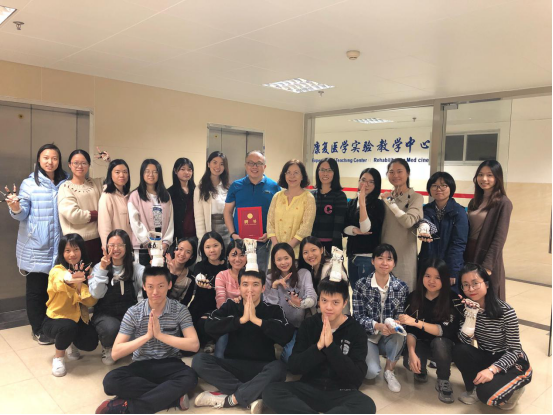
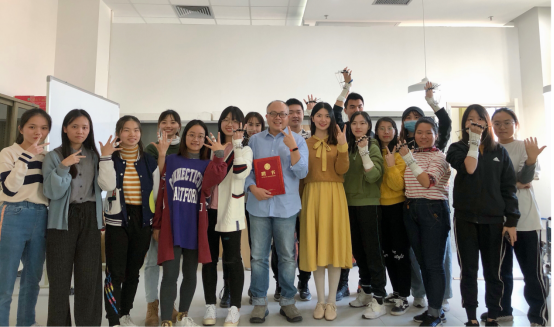
七、实践教学基地
康复作业治疗专业特点是以临床实践操作为主,学院重视实践教学平台建设,教学条件不断得到完善。先后投入教学平台建设经费1000余万元,已建成1000㎡省级实验教学示范中心,仪器设备高达1800万;打造了广州市高水平临床重点培育专科单位、中国康复医学会吞咽专科治疗师实践基地、小儿脑瘫专病管理联盟单位,获批省校企合作育人项目;依托广州医科大学附属第五医院实践教学平台,打造了广州市医学重点学科、广州市高水平重点专科培育单位、广州市康复医学科质量控制中心。
实验教学中心全部向学生开放。目前每年实验课程超700学时、实验项目100余项。
临床实习教学依托各附属医院和全国各地具有符合WFOT国际认证要求带教师资的优质实习教学基地,构建了庞大的临床教学基地体系,临床教学资源丰富,为康复作业治疗专业学生的见习和实习教学提供坚实的保障。目前,承担康复作业治疗专业临床实习教学的基地有13家,包括广州医科大学附属第五医院、广州医科大学附属妇女儿童医疗中心、广州医科大学附属脑科医院、广州市第一人民医院、广东省工伤康复医院、中山大学附属第一医院、中山大学附属第三医院、中山大学附属第六医院、珠江医院、四川大学华西医院、同济大学附属上海阳光康复中心、社区(大沙街社区卫生服务中心)、黄埔区老人院。各基地均是大型综合性三级甲等医院或大型三级康复中心,能为学生见习和实习提供充足的实践操作机会,有经验丰富的经WFOT认证的临床师资队伍,为康复作业治疗临床教学提供保证。
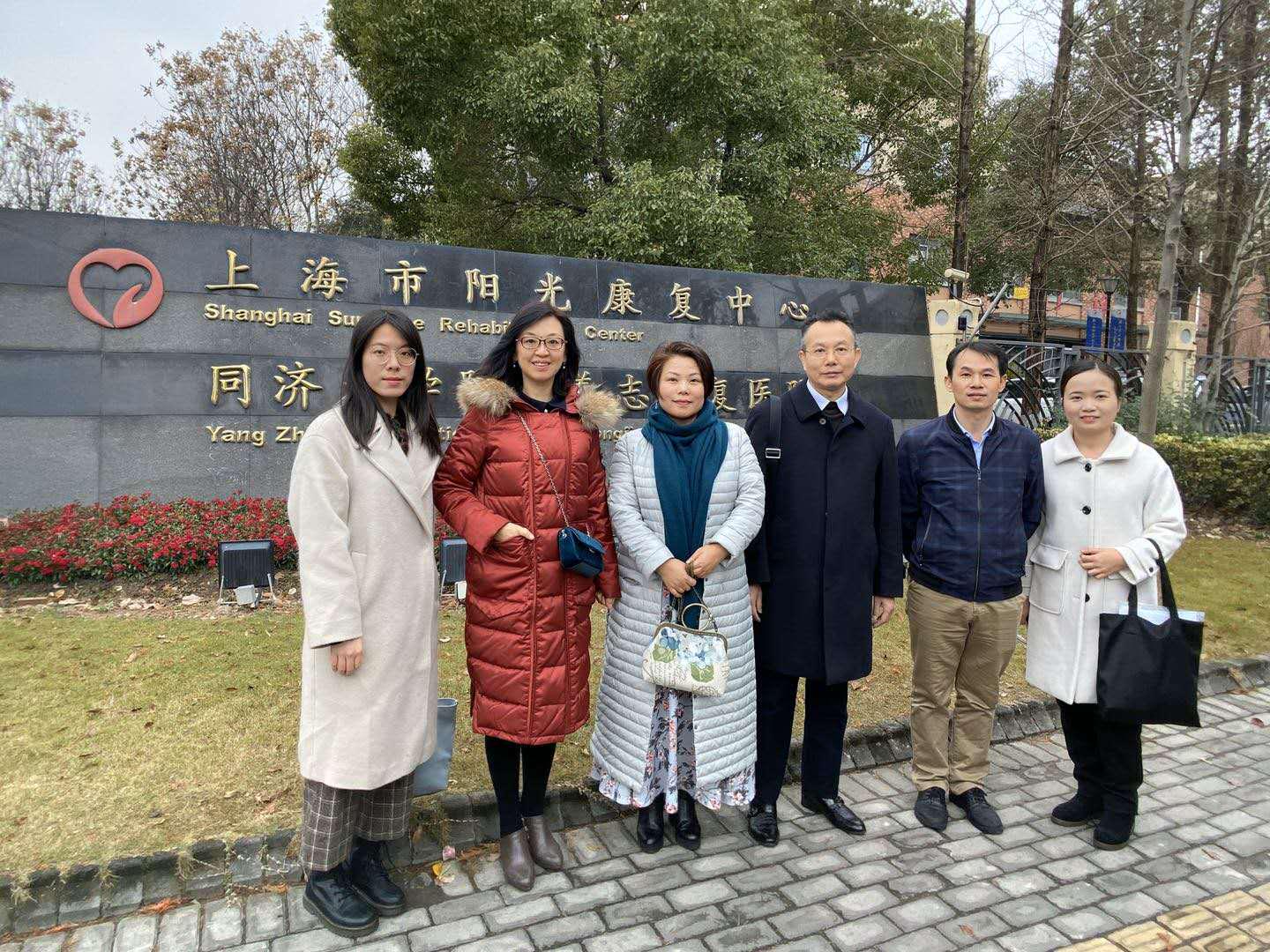
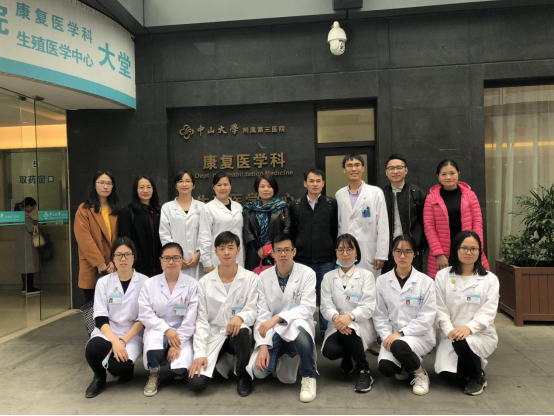
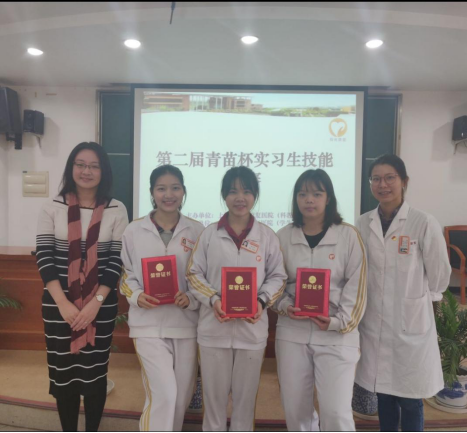
八、对外交流
学校积极开展合作办学,与香港理工大学、台湾中山医学大学建立教学合作交流平台,推动作业治疗教育的合作交流。近年来选派多名OT教师到美国、香港高校等地进行访学、攻读学位;选拔学生赴境外短期交流学习。学生在外交流实习或见习可以等同换算成我校对应学分。
合作院校:
1.香港理工大学
香港理工大学是香港特别行政区的公立综合性研究型大学,受政府大学教育资助委员会资助,可颁授本科至博士学位的高等教育院校。2021年,香港理工大学在QS世界大学排名75位。香港理工大学康复治疗科学系成立于1978年,该学系在物理治疗、作业治疗及基础科学领域拥有44名从助理教授级至首席教授级的教学成员,均拥有博士学位,且毕业于世界知名大学。
香港理工大学短期交流项目(拟)为期4周(5月中旬至6月中旬),学院每年选拔大学三年级康复作业治疗在读学生参与该项目,与国际学生一起学习专业课程和临床见习,主要内容包括肌肉骨骼作业治疗、神经疾病作业治疗、儿科疾病作业治疗、烧伤康复、矫形器制作等。旨在学习先进的现代作业治疗理论与技术,拓宽学生的国际视野。
2.台湾中山医学大学
中山医学大学是位于台湾台中市的一所医学大学,1960年创立。创立之初为“中山牙科专科学校”,于2001年经台湾教育部门审核通过更名为中山医学大学。中山医学大学职能治疗系课程是WFOT认证课程,具备国际化专业水平。
台湾中山医学大学短期交流项目为期2周(7月或8月),学院每年选拔大学二、三年级康复作业治疗在读学生参与该项目。学习内容为专业课程理论授课和临床见习,主要内容包括生理障碍的作业治疗、社会心理障碍的作业治疗、儿科疾病作业治疗、社区作业治疗、老年照护、辅具制作等。旨在学习先进的现代作业治疗理论与技术,拓宽学生的国际视野。
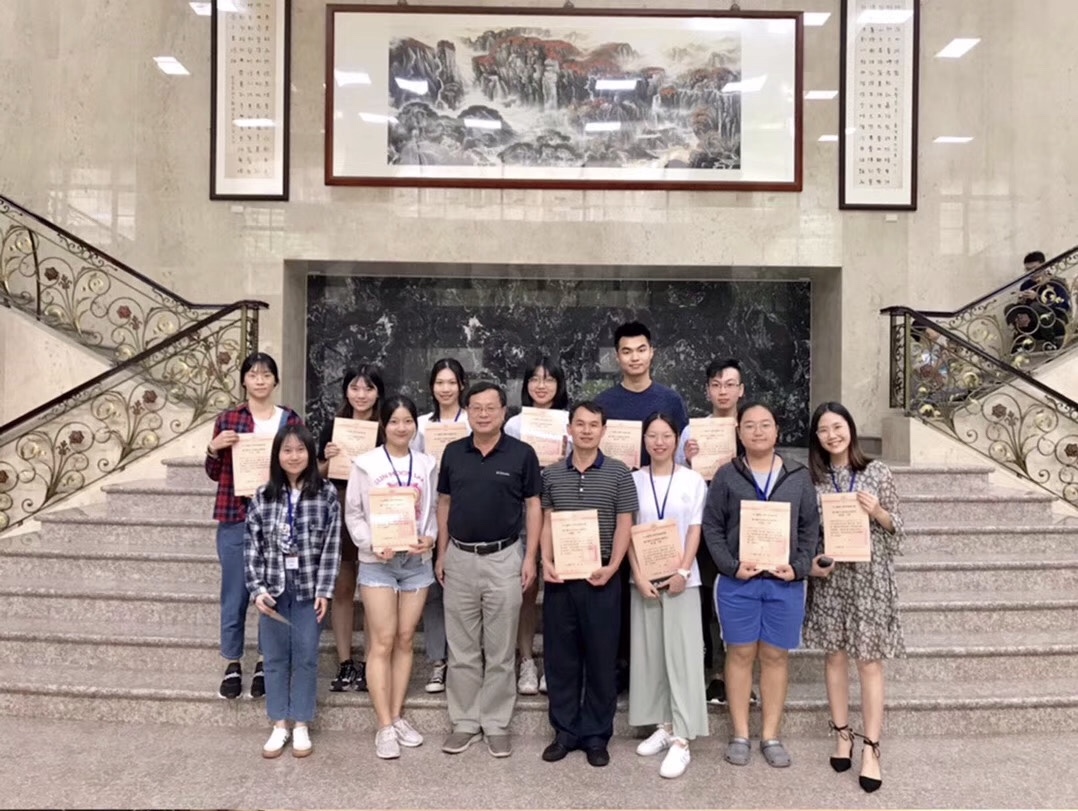
3.美国克瑞顿大学:克瑞顿大学(CREIGHTON UNIVERSITY)是美国一所综合性的私立天主教耶稣会大学。1878年,克瑞顿大学由耶稣会成员建立,是耶稣会学院和大学协会的28个院校之一。位于美国内布拉斯加州奥马哈市,是内布拉斯加州最大的私立教会大学。克瑞顿大学以其独特的小班式精英教学跻身于美国大学前列,每年吸引约78%以上的外州学生及优秀的国际学生来到克瑞顿就读。据2015年U.S.News &World Report美国大学排名,克瑞顿大学名列全美最佳本科教学第3名。
美国克瑞顿大学短期见习项目为期1~2周(7月下旬或8月上旬),学院每年选拔大学二、三年级康复作业治疗在读学生参与该项目。学习、交流内容包括理论课程、医院见习和参观访问三个部分,主要涉及肌肉骨骼作业治疗、儿科疾病作业治疗、老年康复、上肢矫形器、医学伦理课等。旨在学习先进的现代作业治疗理论与技术,拓宽学生的国际视野。
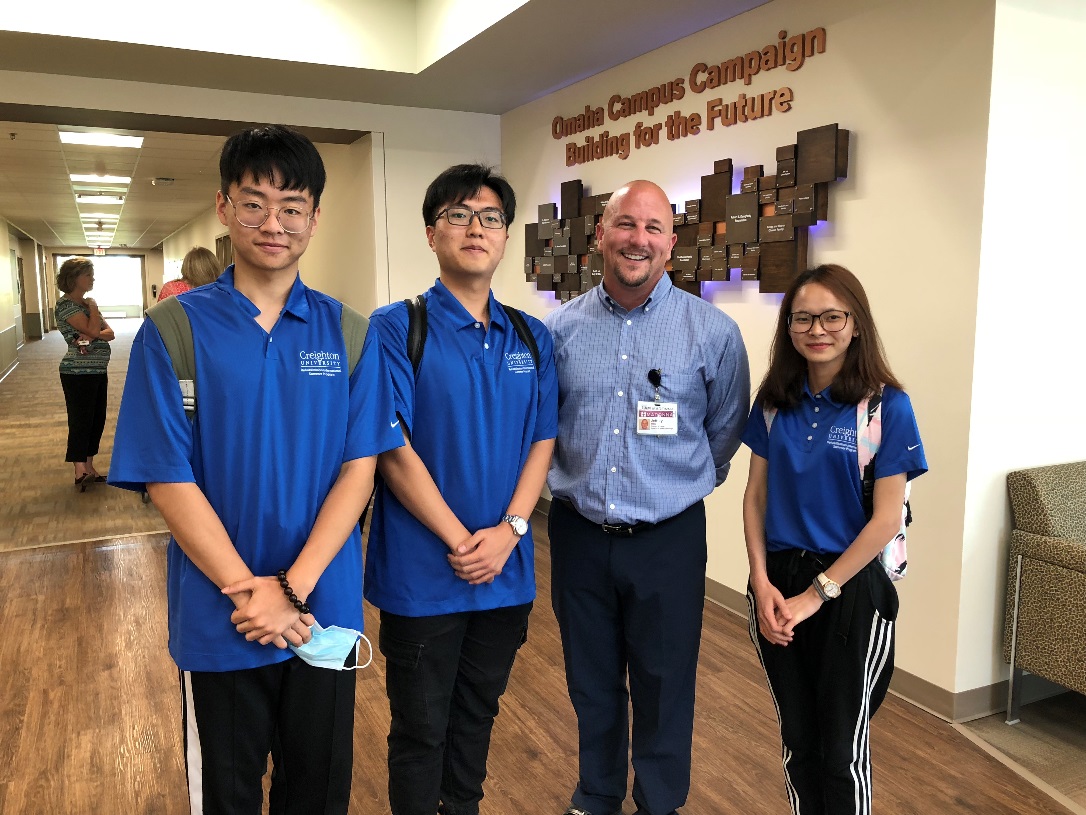
九、毕业要求与学位授予
1.毕业要求:符合学校学籍管理规定的毕业要求,并且获得毕业最低要求172.5学分,其中必修93学分,选修79.5学分。
毕业考核模式:
(1)毕业实习结束前:临床实践操作。
(2)毕业实习考评:达到本专业培养目标,完成各实习教学环节,考核合格,修满规定学分。
(3)毕业论文:毕业前要求完成一篇论文。
2.学位授予:符合教育部和我校有关学位授予规定者,经我校学位评定委员会审核通过,授予理学学士学位。
Guangzhou Medical University
Occupational Therapy of Rehabilitation Programme
1. OT Programme Introduction
In 2005, Guangzhou medical university was approved by the Ministry of Education to set up the Rehabilitation Therapy Programme, and is one of the earlier colleges and universities to set up this programme at undergraduate education stage. In 2016, in order to meet the development needs of China's medical and health services and programmes for the disabled, GMU decided to train students in the department of rehabilitation therapy according to Occupational Therapy (OT) and Physiotherapy (PT). The courses and practical teaching settings of Occupational Therapy of Rehabilitation Programme all refer to the World Federation of Occupational Therapists (WFOT) Minimum Standards for the Education of Occupational Therapists 2016, so as to internationalize the occupational therapy education standards. In 2020, GMU was approved by the Ministry of Education to set up the Programme of Rehabilitation Science-Occupational Therapy. GMU OT programme was officially approved by the World Federation of Occupational Therapists Association with the highest level (7 years) in 2021.
OccupationalTherapy (OT) is an important part of rehabilitation medicine. It provides occupation-based OT service for clients with neurological conditions, musculoskeletal conditions, pediatric diseases, medical and surgical diseases, psychosocial conditions through selective occupational activities or/and appropriate environmental interventions. It is medical profession that deals with physical, psychological, and social functions and promotes health and well-being with OT approaches, such as limb and hand function training, cognitive impairment, group therapy, activity of daily living, vocational therapy, psychosocial dysfunction, sensory integration treatment, orthosis fabrication, pressure garment production, assistive device selection and application, etc. Occupational therapist can also apply new technologies such as virtual reality technology, smart home, computer assisted cognitive rehabilitation evaluation and treatment, etc.
2.Programme Philosophy
The programme philosophy of OT in GMU integrates international and local perspectives, and is guided by a unique philosophical understanding of OT.
Adhering to the educational philosophy of "taking both moral and technic, integrating medicine and humanistic emotion, and regarding teacher and student-center", the philosophy of "taking occupation-centered, and committed to the development of health care and welfare of different people; basing on native, being geared to international standards, being evidence-based, paying attention to scientific research" is further put forward for this programme.
Programme Objective
We strive to foster talents who can meet the needs of China's socialist modernization and the development of occupational therapy in an all-round way. Such high-quality occupational therapy talents have a good command of basic knowledge, skills and attitudes with humanistic feelings, international vision, innovative spirit and practical ability. Graduates are competent in clinical, teaching and research work related to occupational therapy. On top of that, they manage to engage in clinical occupational therapy, occupational therapy education and research in medical units, medical schools and social rehabilitation institutions at all levels and types skills in the cultural context.
3. Programme Information Programme Title: Bachelor of Science Degree in Occupational Therapy of Rehabilitation Programme
Mode of attendance: Full-time
Normal Duration: Four years
Credit Value: 172.5 credits (minimum)
Award: Bachelor of Science Degree in Occupational Therapy
Length of schooling and time distribution
Semester | Teaching | Intensive Practical Education | Exam | Holiday | Total |
One | 15 | 2 | 1 | 5 |
52 |
Two | 18 | 2 | 1 | 7 | |
Three | 18 | 1 | 1 | 5 |
52 |
Four | 18 | 1 | 1 | 7 | |
Five | 18 | 1 | 6 |
52 | |
Six | 13 |
52 | 1 |
14 | |
Seven |
52 | ||||
Eight | |||||
Total | 100 | 58 | 6 | 44 | 208 |
4. Educators
At present, there are 5 full-time OT teachers and 16 part-time OT teachers (all graduated from WFOT approved programme) in GMU, 10 with overseas study experience and 2 visiting professors; there are 67 OT students in GMU, and the teacher-student ratio is 1.7:1. The teacher-student ratio in practice & lab class is greater than 1:15.There are 51 OT teachers in practice placements for GMU OT students. For teaching, the practice placements shall be equipped with qualified occupational therapists which graduated from the programme of WFOT approved, who have at least one year's working experience and cannot teach more than three students at the same time.
5. Curriculum
The curriculum design is based and amended to the WFOT Minimum Standards for the Education of Occupation Therapists as well as local higher education standards. It is organically integrated with the curriculum contents of basic and clinical medicine, occupational therapy, humanities and social sciences and behavioral sciences, contained basic medical courses, professional core courses and general courses.
l General courses: English, Basics and Application of Computer, Physical Education, Moral Education and Introduction to Law, Basic Principles of Marxism, China Modern History Summary, An Introduction to Mao Zedong Ideology and the Theoretical System of Socialism with Chinese Characteristics, Situation and Policy, Basic Course of Library Skills, Career Guidance, etc.
l Basic medical courses: Anatomy, Human Auxology, Physiology, Medical Imaging, Clinical Diagnostics, Osteology, Pathology. Surgery, Internal Medicine, Medical Statistics, Pharmacology, Neurology, Psychiatry, Medical Ethics, etc.
l Professional core courses: Functional Anatomy, Introduction to Occupational Therapy, Theories and Practices of Occupational Therapy, Environment Adaptation and Assistive Technology, Prosthetics and Orthotics, Occupational Therapy for Pediatric and Adolescent Conditions, Occupational Therapy for Neurological Conditions, Occupational Therapy for Musculoskeletal Conditions, Occupational Therapy for Medical and Geriatric Conditions, Occupational Therapy for Psychosocial Dysfunction, Occupational Therapy in Vocational Rehabilitation, Functional Anatomy
6. Practice Education
The total practice education is multi-level and diversified including three stages, so that the students' clinical reasoning and practical skills improved gradually.
Practice education I is in courses, the students go to the labs, clinical departments, rehabilitation centers and so on.
Practice education II (2~6 semesters) includes clinical education, social practice, volunteer activities and overseas clinical education. The contents of the clinical education corresponds to the courses taken in the semesters, including core professional courses, which is a total of 80 class hours. The students participate the geriatric OT social practices, “bring scientific and literacy knowledge and offer medical service to rural areas” or pediatric volunteer activities every year, lasting 160 class hours in total. What’s more, the students can choose Creighton University, Chung Shan Medical University, the Hong Kong Polytechnic University and their medical facilities for practices according to their own conditions, so as to expand international horizons.
Practice education III (6~8 semesters) lasts 1600 class hours, common systemic diseases as the main line. A rotation system is formulated to ensure the service objects are disparate and diverse. The service scopes include hospitals, communities, home and working places. According to "student-centered" concept, students can choose their own practice bases after acknowledging the characteristics of the practice bases.
According to "student-centered" concept, students can choose a general hospital as one of their own practice bases after acknowledging the characteristics. In the special hospitals, the students study OT clinical practice in pediatric and adolescent conditions (8 weeks) in the Guangzhou Women and Children's Center, and OT clinical practice in psychosocial dysfunction (4 weeks) in the Affiliated Brain Hospital of Guangzhou Medical University (a psychiatric hospital). Besides, the students participate the OT clinical practice in community and geriatric (2 weeks) in Community center called the Nursing Home of Huangpu District, Guangzhou. The rotation system is formulated to ensure the service objects are disparate and diverse. The service scopes include hospitals, communities, home and working places.
Besides, students experience clinical practice in rehabilitation medicine (1 week), basics of physiotherapy (4weeks), language and swallowing therapy (4 weeks), Chinese traditional rehabilitation (2 weeks) in order to improve their competency suited to local situations.


7.Practice education site
Clinical practice is primary factor of OT Programme. The university attaches great importance to the construction of practical teaching platform and constantly improves the teaching conditions. More than 10 million RMB has been invested in the construction of rehabilitation teaching platform, and the 905 cm2 provincial experimental teaching demonstration center has been built with 18 million RMB of equipment. The institute has built a high-level clinical training unit in Guangzhou, a unit of Pediatric Cerebral Palsy Special Disease Management Alliance and a school-enterprise cooperation education project in Guangdong Province. Relying on the practical teaching platform of the Fifth Affiliated Hospital of Guangzhou Medical University, the university has established Guangzhou Medical Key Discipline, Guangzhou High-level Key Specialty Cultivation Unit and Guangzhou Rehabilitation Medicine Quality Control Center.
The experimental teaching center is fully open to students. At present, there are more than 700 class hours of experimental courses and more than 100 experimental projects every year.
The clinical practice teaching relies on the affiliated hospitals and the high-quality practice teaching bases with teachers' talents that meet the requirements of
international certification all over the country, and constructs a huge clinical teaching base system with abundant clinical teaching resources, which provides a solid guarantee for the apprenticeship and practice teaching of students majoring in rehabilitation therapy.
The OT programme relies on the affiliated hospitals of the university and the high-quality practice education sites with teachers that meet the requirements of international certification all over the country, and build a huge clinical teaching base system with abundant clinical teaching resources, which provides enough practice opportunities for students and a solid guarantee for the students in OT programme. Currently, there are 13 sites that undertake OT’s practice education III, including the Fifth Affiliated Hospital of Guangzhou Medical University, Guangzhou Women and Children's Medical Center, the Affiliated Brain Hospital of Guangzhou Medical University (a psychiatric hospital), Guangdong Work Injury Rehabilitation Hospital, the First Affiliated Hospital of Sun Yat-sen University , The Third Affiliated Hospital of Sun Yat-sen University, The Sixth Affiliated Hospital of Sun Yat-sen University, Zhujiang Hospital of Southern Medical University, West China Hospital of Sichuan University, Yangzhi Affiliated Rehabilitation Hospital of Tongji University, Community Health care Center of Dasha Street and Huangpu district nursing home. Each site is a large comprehensive tertiary class A hospital or a large tertiary rehabilitation center, which can provide sufficient practical opportunities for students' internship, and has a team of experienced clinical teachers to guarantee the clinical teaching of rehabilitation.



8.Innovation and personality development platform
The school actively carries out cooperation in running schools, established a teaching cooperation and communication platform with The Hong Kong Polytechnic University and Chung Shan Medical University to promote occupational therapy education. In recent years, OT teachers have been sent to universities in the United States for visiting study and degree study; students were sent for short-term exchange and study abroad. Students' practice or communication abroad can be converted into corresponding credits of GMU.
Cooperative academies:
1. The Hong Kong Polytechnic University (PolyU)
PolyU is a world-class research university, ranking among the world’s top 100 institutions. The department of Rehabilitation Science is built from 1978, has 44 faculty teaching staffs ranging from Assistant Professor to Principle Professor in the areas of Physiotherapy, Occupational Therapy and Basic Science.
The Hong Kong Polytechnic University Short-term Exchange Programme (Plan) will last four weeks (May to June). Selected students from Year 3 will join this programme with international students, learning professional knowledges and clinical practice. The contents are included in occupational therapy for Neurological Conditions, Musculoskeletal Conditions and Pediatric and Adolescent Conditions, as well as Burn Rehabilitation, Prosthetics and Orthotics. It aims to help students to learn advanced theory and technology of occupational therapy and broaden students' international vision.
2. Chung Shan Medical University
Chung Shan Medical University is a medical university located in Taiwan, founded in 1960. It was named as Chung Shan Dental College at the beginning, was renamed Chung Shan Medical University in 2001. The Occupational Therapy Program is accredited by WFOT, provided with international professional level.
Chung Shan Medical University Short-term Exchange Programme will last two weeks (July or August). Selected students from Year 2 or 3 will join this programme, learning professional knowledges and clinical practice. The contents are included in occupational therapy for physical dysfunction, psychosocial dysfunction and Pediatric and Adolescent Conditions, as well as community occupational therapy, elderly care, Prosthetics and Orthotics. It aims to help students to learn advanced theory and technology of occupational therapy and broaden students' international vision.

3. Creighton University
Creighton University is a comprehensive private Catholic Jesuit university in the United States, founded in 1978. It ranks among the top universities in the United states for the uniquely small class size and elite teaching, attracts more than 78% of out-of-state students and outstanding international students. According to the 2015 U.S. News & World Report University Ranking, Creighton University is ranked third for the best undergraduate teaching in the country.
Creighton University Short-term Exchange Programme will last one or two weeks (July or August). Selected students from Year 2 or 3 will join this programme, learning professional knowledges and clinical practice. The contents are included in occupational therapy for Musculoskeletal Conditions, Geriatric Conditions, Pediatric and Adolescent Conditions, as well as Prosthetics and Orthotics, Medical ethics. It aims to help students to learn advanced theory and technology of occupational therapy and broaden students' international vision.

9. Graduation requirements and degree award
(1) Graduation requirements: Meet the graduation requirements of the University’s Student Status Management Regulations, and obtain the minimum graduation requirement of 172.5 credits, of which 93 credits are compulsory and 79.5 credits are optional.
(2) Graduation assessment model
a. Practice education III evaluation: Achieve the training objectives of this programme, complete each internship section, pass the assessment, and complete the required credits.
b. Final assessment: practical examination.
c, Thesis: One thesis is required before the graduation (From Class 2018)
(3) Degree award
Those who meet the requirements of the Ministry of Education and Degree Awarding of University will be awarded the Bachelor of Science degree after being approved by the Academic Degree Assessment Committee of the university.




